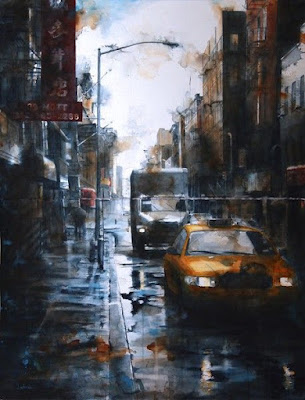Have you every asked yourself when a painting is finished. For some artists, this may seem like an easy question to ask. However, for others—regardless of the medium—identifying when a painting is completed is more complicated. Choosing when to stop altering a painting can be a highly individual decision and there are instances in which a painting is never fully done, at least in its artist’s mind.
Often the sense of completion is a purely intuitive one. I admire those who are able to look at a painting and say, ‘It’s done now.’ However, when I see the painting the next day with a fresh pair of eyes, after I think it may be done, I always add more to it. There are some paintings that go through many false finales before they are deemed complete.
Other times, you get to a stage where you begin to wonder whether you've overworked that painting.
Here are three tips when you think a painting is just about done, but not quite:
- Hang it up somewhere for a couple of days and look at it from different angles and distances
- Look at the reflection of the painting in a mirror
- Take a photo and look at it on your monitor
These options help you see it anew.
With watercolours, it's probably better to stop sooner rather than later. It's far easier to add to a painting if you decide it's not yet finished than to undo something if you decide the painting didn't need it after all. You're more likely to ruin a painting by overworking it than by not finishing it.
Because we are constantly improving, a painting that was once considered done may no longer feel like it. I can't tell you how many older paintings I've gone back and made valuable improvements. Do you also do that? There's a level of satisfaction in improving older paintings.
When I saw this painting earlier this week, I knew I had to share it. What an original subject. It is from Fran McGarry.
Have a great week,
Danielle




